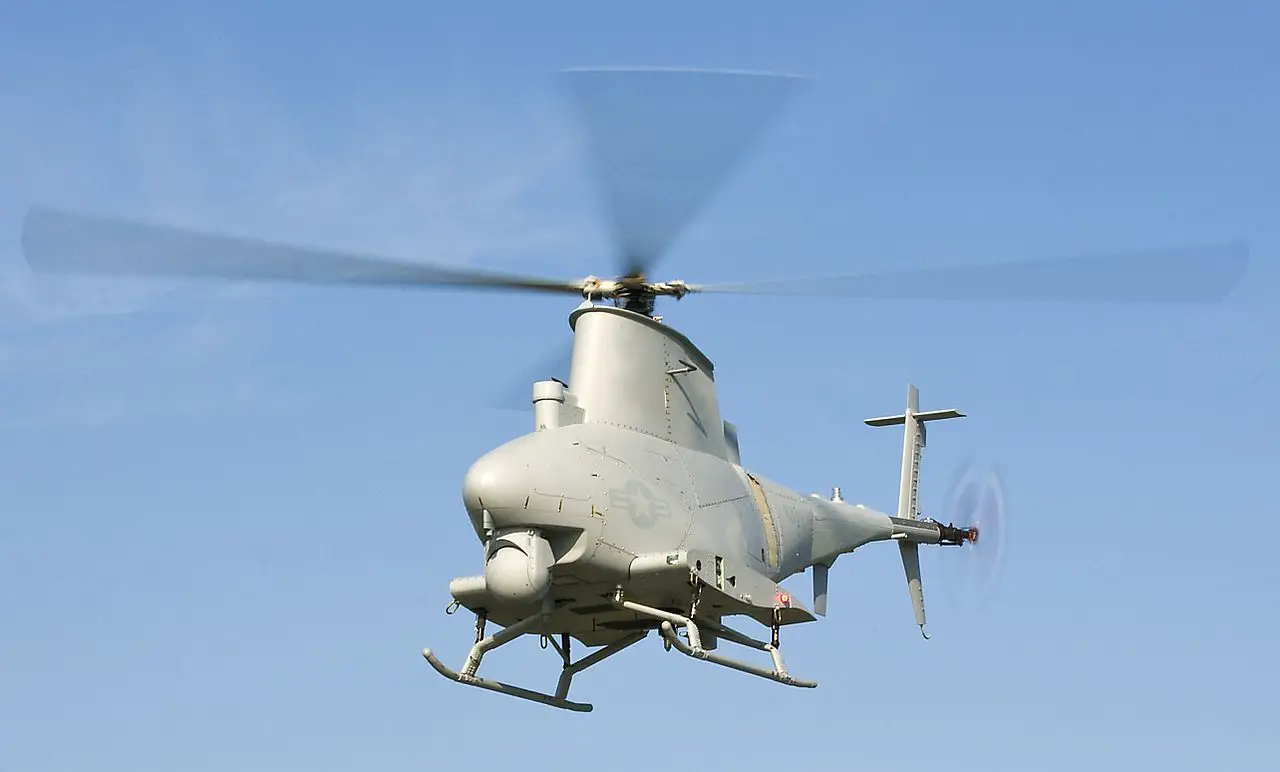The Northrop Grumman MQ-8 Fire Scout is an unmanned autonomous helicopter developed by Northrop Grumman for use by the United States Armed Forces. The Fire Scout is designed to provide reconnaissance, situational awareness, aerial fire support and precision targeting support for ground, air and sea forces. The initial RQ-8A version was based on the Schweizer 330, while the enhanced MQ-8B was derived from the Schweizer 333. The larger MQ-8C Fire Scout variant is based on the Bell 407. As of February 2018, 23 MQ-8B variants were in service with the U.S. Navy.
As the US Navy was withdrawing its RQ-2 Pioneers from service, it began to seek a second generation UAV. The Ryan-Schweizer UAV was selected as the winner in the spring of 2000. The RQ-8A Fire Scout, as it was named, was a derivative of the Schweizer three-passenger, turbine powered 330SP helicopter, with a new fuselage, new fuel system, and UAV electronics and sensors.The initial prototype of the Fire Scout was piloted in initial tests, flying autonomously for the first time in January 2000. The Rolls-Royce 250-C20 turbine engine ran on JP-8 and JP-5 jet fuel.

Although progress on the project had been regarded as satisfactory, the Navy decided the Fire Scout didn’t meet their needs after all, and cut funding for production in December 2001. As it turned out, the U.S. Army was very interested, awarding a contract for seven improved RQ-8B evaluation machines in late 2003. In 2006, it was redesignated MQ-8B.The MQ-8B features a four-blade main rotor, in contrast to the larger-diameter three-blade rotor of the RQ-8A, to reduce noise and improve lift capacity and performance.
The MQ-8B is fitted with stub wings which serve both an aerodynamic purpose as well as an armament carriage location. Weapons to be carried include Hellfire missiles, Viper Strike laser-guided glide weapons, and, in particular, pods carrying the Advanced Precision Kill Weapon System (APKWS), a laser-guided 70 mm (2.75 in) folding-fin rocket, which the Army saw as ideal for the modern battlefield. The Army was also interested in using the Fire Scout to carry up to 200 pounds (91 kg) of emergency supplies to troops in the field.

The MQ-8B complements the manned aviation detachments onboard Air Capable ships and is deployed along with a MH-60R HSM detachment or a MH-60S HSC detachment. With the planned addition of radar, AIS, and weapons, the MQ-8B shall have many capabilities of the manned MH-60R. On 23 September 2011, Naval Air Systems Command awarded Northrop Grumman a $17 million contract to outfit the MQ-8B with the Advanced Precision Kill Weapon System laser-guided 70 mm rocket. By August 2013, the MQ-8B had completed 11 of 12 APWKS launches, with testing to be completed “shortly.”
On 30 December 2012, the Navy issued an urgent order to install RDR-1700 maritime surveillance radars on nine MQ-8Bs. In 2017, the MQ-8B will receive a mine-detection sensor for use in littoral waters called the Coastal Battlefield Reconnaissance and Analysis (COBRA). The COBRA is designed to detect naval mines at a safe distance from a Littoral Combat Ship operating in coastal waters, and also has the capability to locate submarines through acoustic detection if they are on or near the surface. COBRA takes the place of the Fire Scout’s usual EO/IR sensor.













